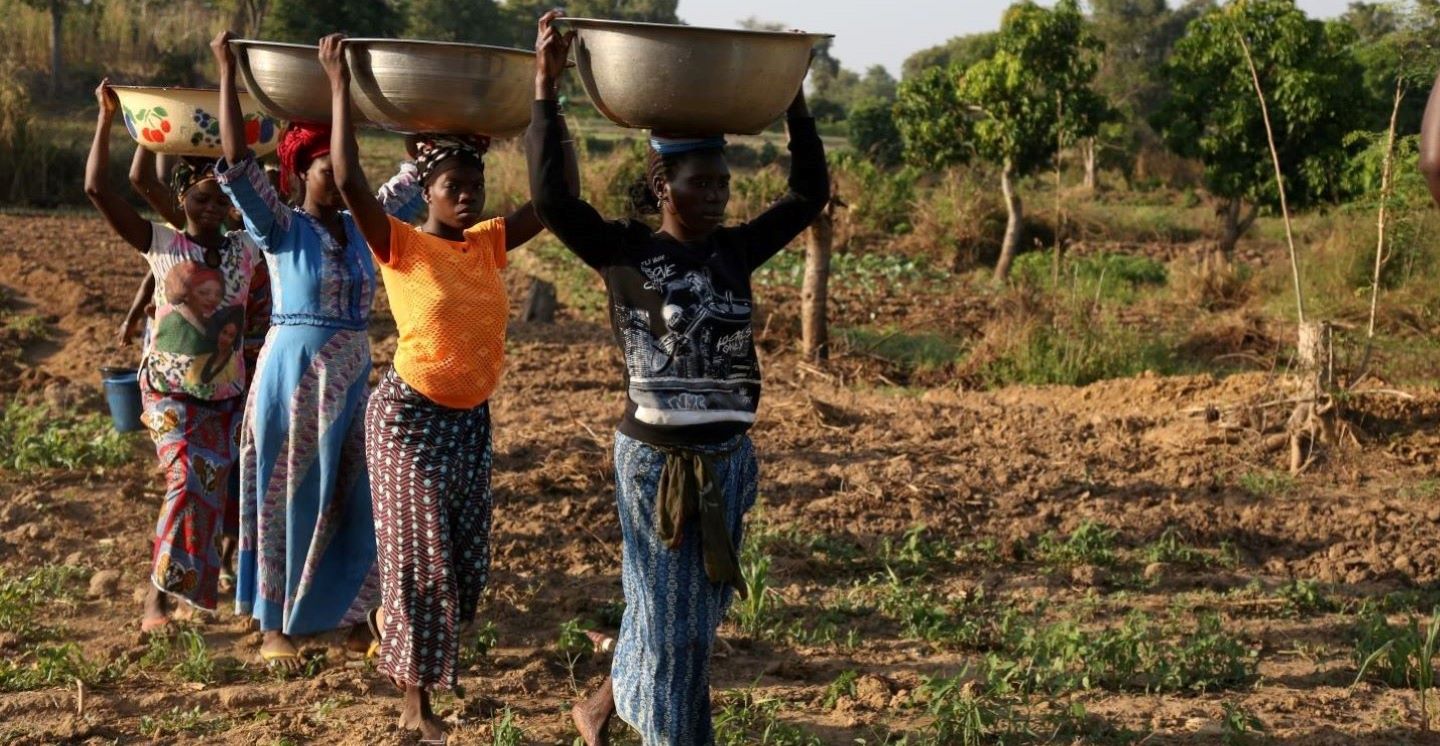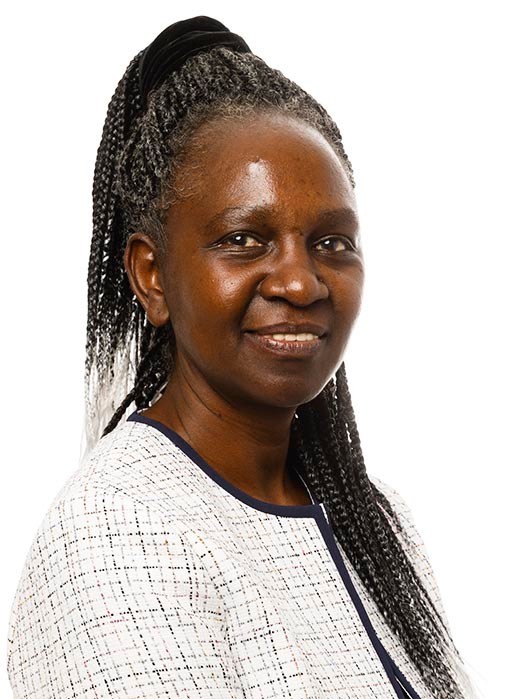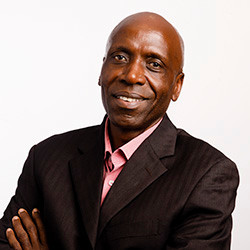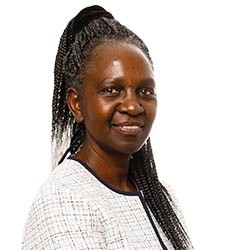The latest food security and nutrition report paints a grim picture. Three IFAD experts react to the shocking figures
IFAD Asset Request Portlet
Asset Publisher
The latest food security and nutrition report paints a grim picture. Three IFAD experts react to the shocking figures
By Richard Abila, Joyce Njoro, Antonio Rota

The latest State of Food Security and Nutrition in the World (SOFI) report shows that rather than moving towards the 2030 goal of zero hunger, ever more people are hungry.
Jointly published by FAO, IFAD, UNICEF, WFP, and WHO, the numbers in the report paint a grim picture. In 2021, as many as 828 million were affected by hunger—an increase of about 46 million since 2020 and 150 million since the outbreak of the COVID-19 pandemic.
Almost 3.1 billion people could not afford a healthy diet in 2020. As the economic impacts of the COVID-19 pandemic and the war in Ukraine drive up inflation and reduce people’s purchasing power, it is more important than ever for governments to support agriculture in ways that reduces the cost of a healthy diet.
On the back of these disheartening results, three IFAD experts give their reactions to the report.

“The world is far off-track to achieving SDG 2.”- Joyce Njoro, Lead Technical Specialist, Nutrition
The SOFI report underlines the stark realities of the state of food and nutrition security in the world today. More people are hungry. More people are food insecure. Billions of people cannot afford a healthy diet. While there has been some progress on stunting and exclusive breastfeeding, anaemia among women of reproductive age has increased. In short, the world is far off-track to achieving SDG 2 on zero hunger and eradicating all forms of malnutrition.
At the same time, inequality is widening, with developing countries, countries in fragile situations, rural areas, and women being disproportionately affected by food and nutrition insecurity. While COVID-19 is a major driver, climate change is also compounding these issues. The war in Ukraine and its impacts across the globe will inevitably worsen the 2022 outlook unless drastic measures are taken now.
While the report’s suggestion to repurpose agricultural policies is interesting, low-income countries have fewer options to do so without some form of trade-off. These are also the countries most affected by hunger and malnutrition, as well as the impacts of climate change and conflict. Since there is no “one size fits all” solution, a combination of policy repurposing options should be considered for low- and middle-income countries.
As the deadline to meet the SDG targets fast approaches, and with the bulk of the work still ahead, it is essential that we strengthen our collaborative efforts with governments. A concerted effort is needed to protect the gains achieved in previous years and reinforce the resilience of the poorest and most vulnerable people in the world.
 “The potential of animal source food is not being exploited.”- Antonio Rota, Lead Global Technical Specialist, Livestock
“The potential of animal source food is not being exploited.”- Antonio Rota, Lead Global Technical Specialist, Livestock
The figures presented in the SOFI report are merciless and present a grim reality: nearly 670 million people will face hunger in 2030—the same number as in 2015 when the 2030 Agenda was launched. Nearly 200 million children are still stunted or wasted, and about one in three women aged 15–49 suffer from anaemia, with no progress made in close to a decade. This calls for a deep reflection on the strategies, actions, and investment priorities to enable the poorest people to overcome poverty.
As a livestock expert, these staggering figures are particularly frustrating given the potential of animal source food (ASF). These foods, particularly eggs and milk, are healthy, rich in high-quality and easily digestible protein, and are sources of iron, zinc, calcium, vitamin A, and vitamin B12. We know that these food sources have a direct positive effect on children's nutritional status, linear growth, and educational achievement, which in turn lead to increased income and productivity in adulthood. These nutrients are also essential for reducing anaemia in women, especially pregnant women. Yet their potential is not being exploited.
Livestock is essential to the livelihoods of about 1 billion of the world's poorest people. The SOFI report emphasizes the need to reorganize support for the food and agriculture sector. However, agriculture’s share in total official development allowance (ODA) has declined in recent years (estimated at 4.3 percent in 2020) and only a small portion is allocated to the livestock sector.
Given what we know about the state of food security and nutrition, as well as the potential of animal source food, a global effort to substantially increase investment in the sustainable intensification of livestock production is critical for significantly reducing hunger and poverty.

“Fisheries and aquaculture are a missing link.” - Richard Abila, Senior Technical Specialist in Fisheries and Aquaculture
The SOFI report presents the stark reality that despite all the efforts made in the past decade, we are not any closer to ending hunger. To the contrary, the report shows that undernourishment is in fact increasing while malnutrition persists in many forms across all regions. Not only are our strategies to end hunger and malnutrition failing, but our food systems are escalating greenhouse gas emissions.
However, the report conspicuously misses one vital food source that offers many advantages and could significantly contribute to achieving SDG 2: aquatic foods.
These foods provide a rich source of protein and contain many of the vitamins and minerals needed to address some of the most severe and widespread nutritional deficiencies, including iron, zinc, calcium, iodine, vitamin A, vitamin B12, vitamin D, and omega-3 fatty acids. Even small quantities of fish in people’s diet can make a big difference to their nutritional status.
Not only are aquatic foods nutritious, they also can create income opportunities for women. Small-scale fisheries and aquaculture—like the ones IFAD works with—produce protein with a much lower carbon footprint than most land animal sources. Thus, well-planned fisheries and aquaculture operations could be a key component in sustainable food systems, providing the necessary animal-source foods to an increasing population.
Fish accounts for about 17 per cent of animal protein consumed globally and provides about 3.3 billion people with almost 20 per cent of their average intake of animal protein. Yet the latest SOFI report does not mention fisheries or aquatic foods—or their potential role in ending hunger.
Publication date: 06 July 2022


